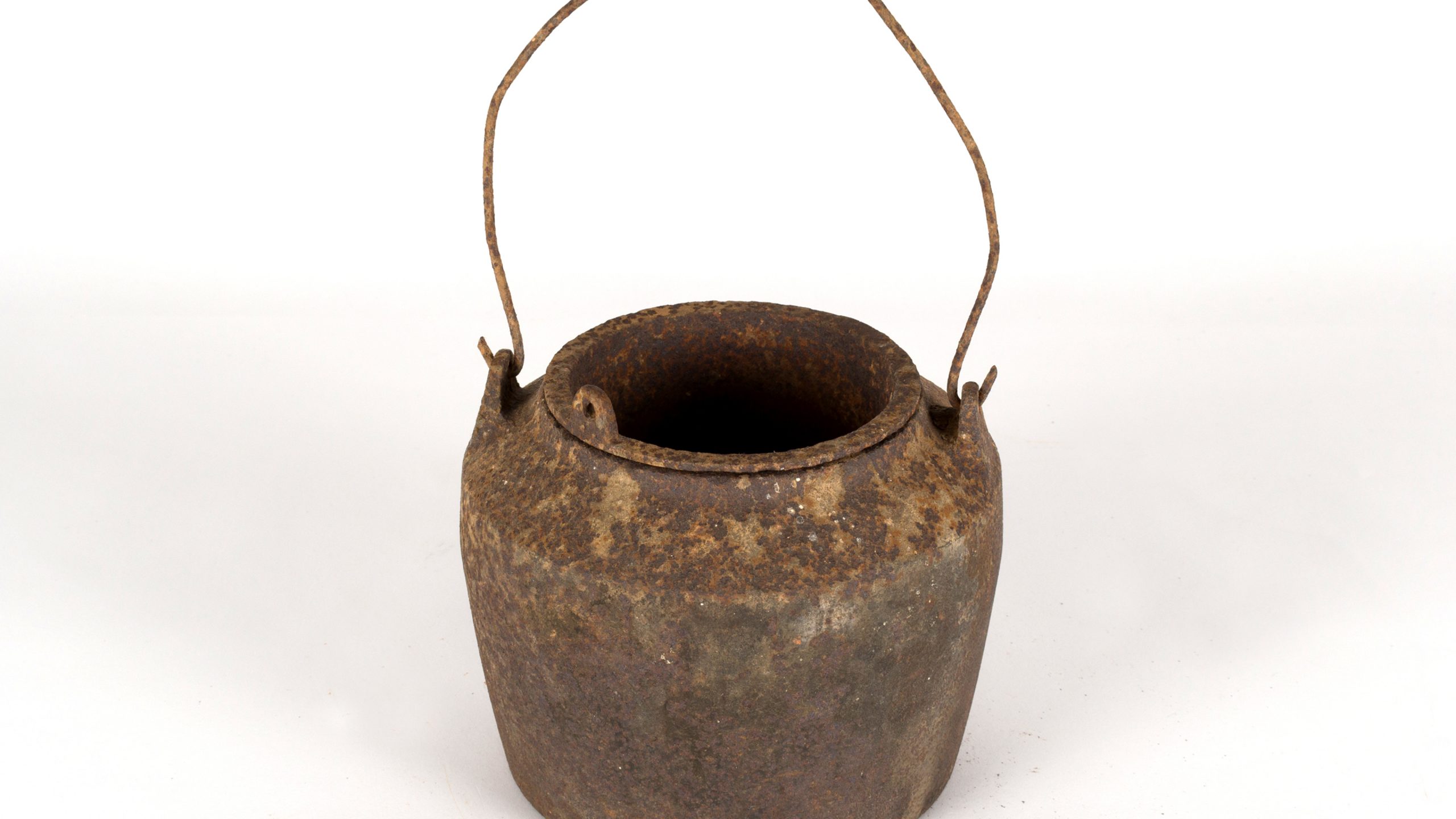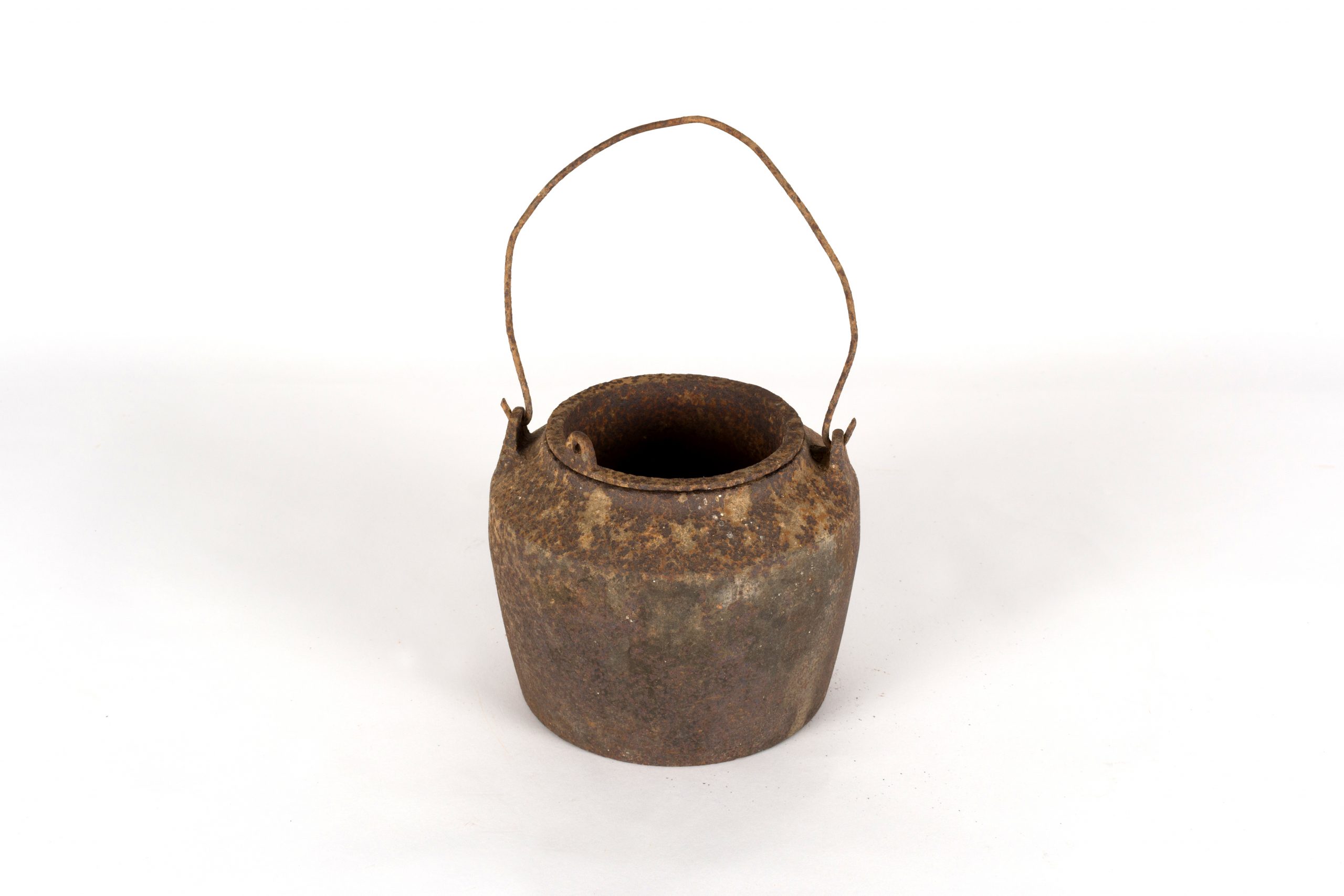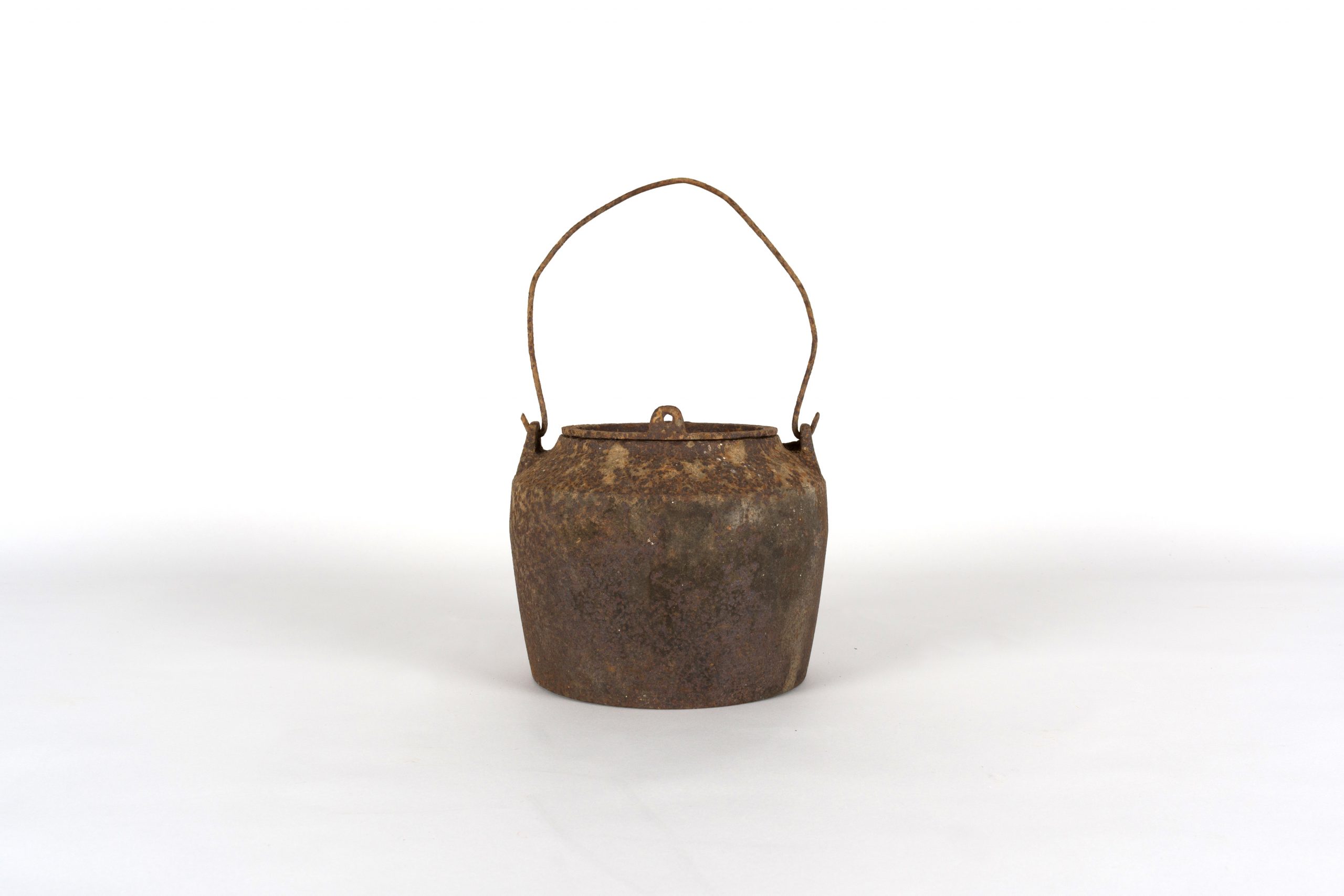Sticky Business
Making Animal Glue in the Riverina
Before 1920 and the invention of synthetics, glues were either animal, vegetable or mineral. These natural glues were used for centuries, but animal glues were used to bond wood and were very strong and water-resistant. Aboriginal peoples from throughout NSW used animal glues for tool making, and European settlers brought with them their own glue recipes.
When Headlie Taylor was working on his engineering prototypes for agricultural machinery near Albury in the state’s west he used animal glue prepared in a pot like this one. Looking like a cast iron teapot, this pot was designed to keep the glue warm until needed. The outer teapot held boiling water and a smaller inner container that held the glue. The boiling water kept the glue warm and fluid.
Making animal glue was not for the squeamish. There were different recipes depending on what the glue was for but at its most simple the glue was either made from blood, hoof and bone, or skin (collagen). It was a very make-do, nose-to-tail process that ensured every part of an animal was used.
When you had enough animal parts, they were boiled to make a concentrated jelly-like substance. This concentrate was then dried into a powder and stored. When you needed some glue, you mixed the powder with water that was then heated. Unless the pieces of carcass were cleaned well before being boiled down, they stank. It was a sign of a good glue if it didn’t smell too bad – although bad is relative.







